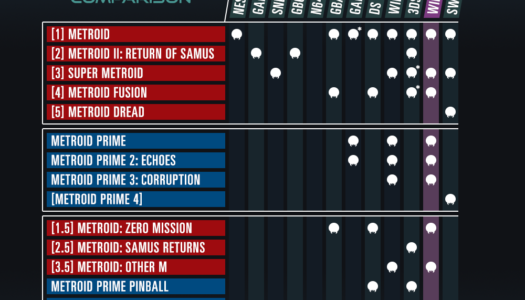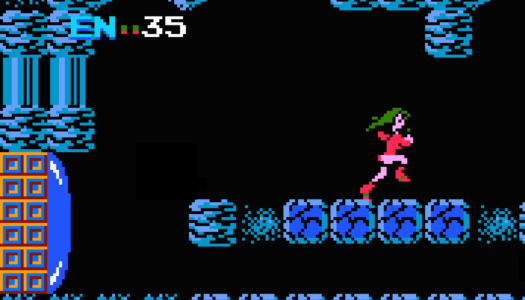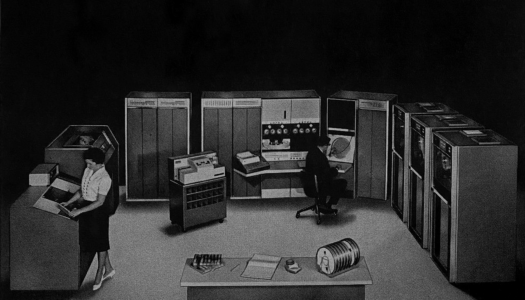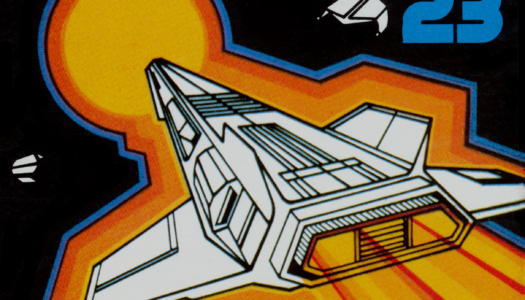Alice: Madness Returns (2P Review)

Publisher: Electronic Arts / Developer: Spicy Horse / Platform: PC, PS3, Xbox 360
Kate: Alice: Madness Returns is a surprise sequel to 2000’s American McGee’s Alice, a game praised by critics at the time for wonderful (though now dated) visuals that made up for the average-to-mediocre gameplay. So how does the new installment stack up?
The gameplay has improved, thankfully. American McGee once stated that he wanted to be “the next Walt Disney, only a little more wicked,” but I’d posit that what he actually wants to be is a wicked Shigeru Miyamoto. He doesn’t quite reach Miyamoto’s level of brilliance, but it’s difficult to ignore how much the 3D platforming in Madness Returns owes to games like Super Mario 64, right down to the occasional rides on long, winding slides that containing lines of “coins” for you to try and collect.
Except in this wicked world of Wonderland, “coins” come in the form of teeth that fall out of enemies once defeated. Though due to there being no “lives” counter, the purpose of collecting teeth is instead to purchase upgrades for your weapons. But we’ll get into the weapons more later.
Perhaps even more interesting is the change to the jump mechanics. Instead of Mario’s double and triple jump, which requires you to touch the ground before each jump, Alice’s double and triple jumps are just additional regular jumps that can be done in mid-air. The amusing part being that holding down the jump button allows Alice to to float a short distance, similar to a certain dress-wearing character in Super Mario Bros. 2.
But it doesn’t end there. Toward the end of the game, I came to a small room that required me to walk into a painting. This led me to a side-scrolling level, where I found myself dodging slow-moving fireballs being shot high and low, then running under a “thwomp”-type obstacle, after which I encountering a large turnip-shaped vegetable. When I approached, I was instructed to press X to pick up the peach. I started to warm more to the game’s at times repetitive platforming as I began to realize that this was like a darker version of what Super Princess Peach should have been.
James: While I didn’t find the platforming all too similar to Super Mario 64, the combat was surprisingly reminiscent of the more recent Legend of Zelda games, down to the pulled-in camera angle while locked onto an enemy (however slightly less intuitive, as I’ll get into later). You have your standard blade, good for quick strikes against a single enemy, and later on you uncover a hobby horse (hammer), a pepper grinder (sort of like a portable gatling gun), and a giant teapot (grenade launcher). Each of these weapons fit into pretty standard third-person fighting weapon categories, but their unorthodox appearances still keep things interesting. The hobby horse, for instance, is a slow-yet-powerful weapon that Alice smashes into the ground. As you level it up, however, the horse starts to make rather awesome-sounding neighs that echo as you swing it around. This really makes you feel like you’re wielding some sort of magical fairy tale-esque weapon rather than a simple sword or hammer.
While the tools used in combat were really nicely-crafted, the combat itself bothered me a bit. While slashing away at enemies feels great, and the effects the weapons make along with the enemies’ visible recoil make it seem like you’re actually doing some damage, the game itself seems to conspire against your success in battle. You can lock on to enemies by holding Left Trigger, but the camera doesn’t seem to make any sort of effort to keep the enemy in the center of the screen. As you or the enemy start to move, the both of you will stay onscreen, however after awhile you’ll find either you or your enemy (or both of you, in some cases) has drifted entirely to the edge of the screen, which makes things a little annoying.
Another frequent problem I ran into was the fact that enemies you haven’t been watching will constantly leap at you from offscreen, catching you completely off-guard and usually stunning you long enough to get hit again from the enemy you were originally watching. I understand how hard it would be to both keep every enemy onscreen at the same time AND keep things coherent enough to focus on the enemy you’re locked on to, and the game attempts to remedy this by either giving enemies audio clues as to when they are readying an attack or by slowing down time a second before you’re hit, giving you enough time to dodge out of the way. The problem, though, is that this doesn’t always work. Audio clues can be hard to hear sometimes, and in other cases you’ll hear an enemy fire a cannon, but you’re given no clue as to how far away they were, so you’re still unsure of when exactly to dodge. Other times you’ll dodge an offscreen enemy’s attack when everything slows down, just to move into the attack of another, separate enemy you also couldn’t see. While these problems don’t crop up all the time and very rarely make fights impossible to finish, they do happen commonly enough to make it a real annoyance.
Kate: In regards to similarities to Legend Of Zelda, fans of the series might also notice that the few music-based puzzles that pop up bear a certain resemblance to playing the ocarina in Legend of Zelda: Ocarina of Time .
I didn’t have as much of an issue with the camera during combat as I did with just the repetitive nature of it. Most of the enemies only require that you hit them enough times and/or with the right weapon, but I personally found the more tedious ones to be the enemies that are essentially invincible until they begin a particular attack that opens them up to being hit, leaving you waiting around dodging attacks before you can do anything. Some might enjoy that type of thing, but I was generally tired of it after the third time fighting the particular enemy, especially when they were mixed in with a whole group of enemies I had to fight all at once.
What I did like about the combat system is how each of the four weapons is assigned a button, so there’s no need to press a different button to scroll through or switch weapons. But that battles themselves too often felt more like an unwanted obstacle keeping me from progressing to the next platform (or exploring the area), than something that added variety to the levels.
James: Personally, I didn’t really find the combat all that repetitive. There are a handful of enemies that appear in every chapter, but each chapter also has its own, unique enemies that have their own, unique attack patterns and weaknesses. I really thought this helped combat seem less monotonous, however I will agree with you that being forced up against three enemies that only become vulnerable within a certain window of time on top of other, more simplistic enemies did grow quite annoying. That, coupled with the combat issues I talked about earlier really made combat less fun than I felt it could be.
Combat aside, the main thing that had me interested in Alice was the art, and honestly the game did not disappoint here in the least. Each chapter has its own unique look, even down to Alice’s dress. Aside from a few segments in-between chapters in which you’re introduced to the real world and a few other parts in which Alice wears her normal dress, Alice’s dress changes into a unique variation that compliments the area that the chapter takes place in. This really gave me a drive to keep playing, as I always wanted to see what the level would look like next. Even a few times within the same chapter the world around you will change into something completely unlike anything you’ve ever seen before. A personal favorite of mine would be Cardbridge, in which Alice must walk—hundreds of miles above the ground—on giant playing cards that fly up to her as she takes each step. The design of Cardbridge was absolutely breathtaking, and definitely stands out as the most memorable part in the game for me. Not to say the other parts of the game aren’t impressive; every time the scenery changed I took a moment to look everything over. Not a single part of any level (that I can remember) is repeated in later parts. Each time the game changes scenery it changes to something completely fresh, and is always a pleasure to look at.
Kate: Like the original game, the art direction is definitely where the game really shines. The visuals are so imaginative, that it becomes extra disappointing that the story is so subpar. McGee often seems to make the common videogame industry mistake of not bothering to hire a real writer, and it’s unfortunate, because a stronger story could’ve lifted this game to a whole new level. Instead, like American McGee’s Alice, we get writing that at times seems overly pleased with itself, believing itself to be more clever than it is.
“A secret is only a secret when it is unspoken to another.”
“A coop is really just a cage. But the birds don’t seem to mind.”
The loading screens frequently try to impress you with these masterfully obvious observations masquerading as poetic wisdom, giving you a sense of the level of intelligence you can expect from the story. At least the original game had entertainingly bizarre voice acting that sometimes helped disguise the awful writing; the Duchess was almost unintelligible if not for the caption text, and Mock Turtle’s delivery was so strange and quirky, it at times sounded almost like the actor was making fun of his lines (I was in fact a little disappointed that Mock Turtle was completely recast for the sequel).
Then there are my problems with the ending. I’m not going to get into any spoilers here, but the ending is the sort of thing that makes sense in the context of this surreal, delusional world of Alice’s, but begins to fall apart the more you actually think about it. I might write up a story analysis at some point discussing the problems I had with the story’s plot.
Another story aspect I was disappointed with was the collection of memories. Or more accurately, the memories themselves. Similar to ilomilo, you encounter snippets of memories throughout a chapter. The idea is to effectively drip feed story to you between cinema scenes, theoretically giving you just enough to keep you thinking about what’s going to happen next. Alice: Madness Returns goes about this by having each memory give you a line or two of dialogue from a character in Alice’s past.
The problem is, most of these memories are about as informative as the aforementioned bits of “poetic wisdom,” and add almost nothing to the overall narrative. One memory is Alice’s sister complimenting her jumping, joking that she must be part frog. Another memory is Alice’s mother telling her to stop leaping from the table. See, they’re saying Alice jumps so much in Wonderland because she liked to jump a lot as a kid! Most of these left me feeling like I’d just wasted my time even bothering to go after them, though a very small handful did provide some interesting story details.
I also would have preferred the chapters to have been split in half, the same amount of game but split between twice as many chapters. Not only would it have been a good way to increase the story to game ratio, but it would’ve provided more stopping points. It’s difficult to know what a good place is to stop for awhile, due to game saves happening at checkpoints that are fairly spread out, with no way to manually save (one of the few things I wish had carried over from the first game). If you feel like stopping, your choices are to either wait until you pass a checkpoint— attentively watching for the “saving” icon to appear in the lower corner—or to just quit out and hope that the last checkpoint wasn’t too far back. The end of a chapter is always a nice stopping point, but the chapter lengths as they stand now feel at times like a bit much to play through in a single sitting (depending on how much free time you have).
James: I think the insubstantial nature of the collectibles in Alice is one of my main problems with the game. There are a number of collectibles and secret areas (and collectibles that even open up secret areas, which house even more collectibles), however none of the secrets really made me want to go back and find the ones I’ve missed, other than a shot at getting an Achievement. Once you’ve beaten the game, you have the option of re-visiting any chapter in the game with all of your upgraded weapons, and you can even choose any one of Alice’s many dresses to play through the chapter in (each of which actually gain secondary abilities once you’ve beaten the game). There is even a $2 DLC pack that adds some rather nice-looking extra dresses, but again I really didn’t see a point in going back once the game was beaten. Collecting memories, as Kate said, really doesn’t uncover any hidden plot points or anything that makes you go “Oh, wow!” once you’ve beaten the game, and by the time you’ve reached the end of the fifth chapter all of your weapons are fully upgraded, making teeth collection useless. There are hidden pig snouts to pepper (which open secret areas) and hidden bottles to find (which unlock concept art—but only if you’ve collected every bottle in the chapter), but neither of these really made me go “yeah, I want to go back and get those.” The addition of perhaps extra dresses or weapon variants to unlock (the DLC pack mentioned earlier also supplies Alice with tweaked versions of her normal weapons—an interesting touch) really would have given the game some decent replay value. It’s unfortunate, because despite how much fun I had exploring all the different kinds of scenery that Alice throws at you, once you’ve beaten the game that’s kind of… it.
Kate: My only other minor complaint was invisible walls. Another fun gameplay aspect is the “shrink” button, which let’s Alice shrink at will, which can reveal secret writing or invisible platforms, but also allows her to enter small entrances and tunnels (not unlike Samus Aran’s Morph Ball). However, with so many games doing a better job of setting up obstacles that don’t make you feel like you’re hitting an invisible wall, it made the levels feel kind of dated when I can see an opening tall enough for small Alice to enter, or an obstacle low enough that regular-sized Alice could jump over, and instead encounter an invisible wall.
Most of the time it isn’t a big deal, other than making the level feel more like just a videogame level and less like a real place. But occasionally I’ve also tried to land on platforms that were completely within reach, only to discover the level designers didn’t want me to go there, so I hit an invisible wall and fall to my death. I remember one room in particular, with a bunch of hanging cages, and then this large metal structure in the middle of the room that had a face on it, with a large open mouth and sticking out a platform-sized tongue. It wasn’t very far away from the platform I was standing on, so I jumped to it, to see if there might be a secret item in the mouth. Instead, I hit an invisible wall of death.
I also experienced one odd glitch. There’s a chapter where you encounter a giant enemy that is invincible, and your only choices are to either run away, or dodge until a door opens. At some point I discovered that any time I’m stuck in a room with him and a bunch of other enemies I’m supposed to fight, I can just draw the enemies towards him, dodge out of the way when he attacks, and his attack will actually wipe out the enemies for me. I figured maybe this is what I was supposed to be doing the whole time, and it just took me awhile to realize it. Well, in one particular room, I cleared out all the enemies, and was left with just the big guy. Am I supposed to kill him now? Where am I supposed to be going? It turns out that by not killing the last regular enemy myself, I had managed to glitch the level into not triggering the exit, and had to restart that section in order to advance. So just a word of warning: if you decide to use this strategy, make sure you kill the final enemy yourself.
James: Personally, I didn’t find invisible walls to be as troublesome. Over the course of the game, I found only a couple. Maybe I didn’t explore as much as you did? Maybe I can just figure out what is and isn’t an explorable area better? I don’t know. The only real glitch I found was just an enemy that suddenly disappeared, but the battle music still stopped and I was still able to move forward. So, maybe you were just unlucky. Or, maybe I was just really lucky, and more people have been encountering the problems you have? I’m not really sure.
Overall, I found Alice: Madness Returns to be a very enjoyable game despite its problems. Combat is genuinely fun when the camera isn’t working against you, and I really didn’t find the platforming to be too repetitive, due to the fact that the scenery changes so drastically from chapter to chapter. My only real problem with the game was the fact that there really isn’t much reason to go back once its all over. Even with this issue, though, I really enjoyed my time spent in Wonderland, and its breathtaking mix of both fantastical and demented elements really made it a memorable game. 8 out of 10.
Kate: Wonderful art direction made up for what I found to be sometimes repetitive gameplay—puzzles that were interesting the first time but got old after the third appearance, certain pattern-based enemies showing up a few times too many, and a few chapters that went on just a little too long without a change in scenery—but wasn’t enough to make up for the subpar story. I give it a 7 out of 10.














